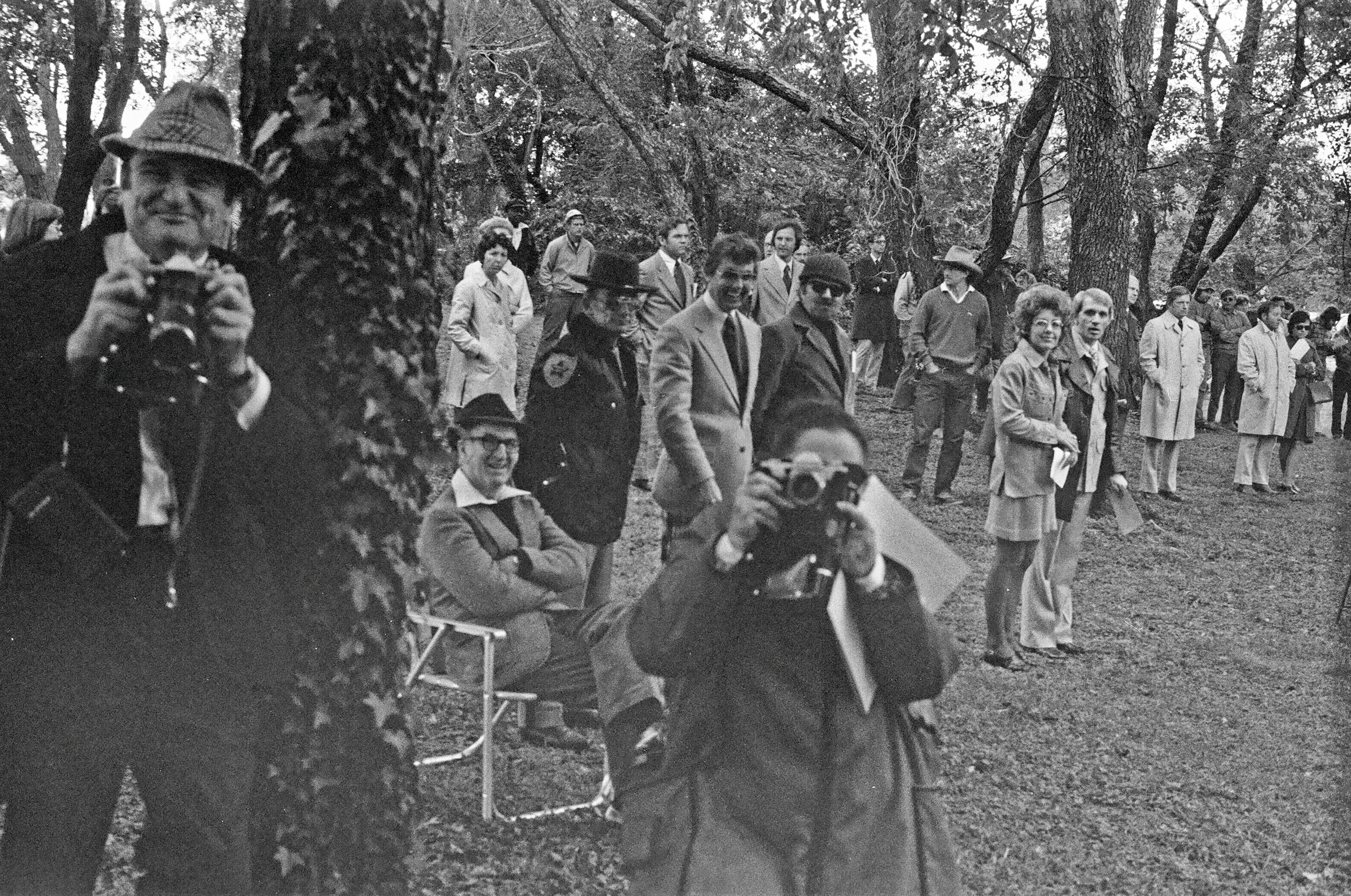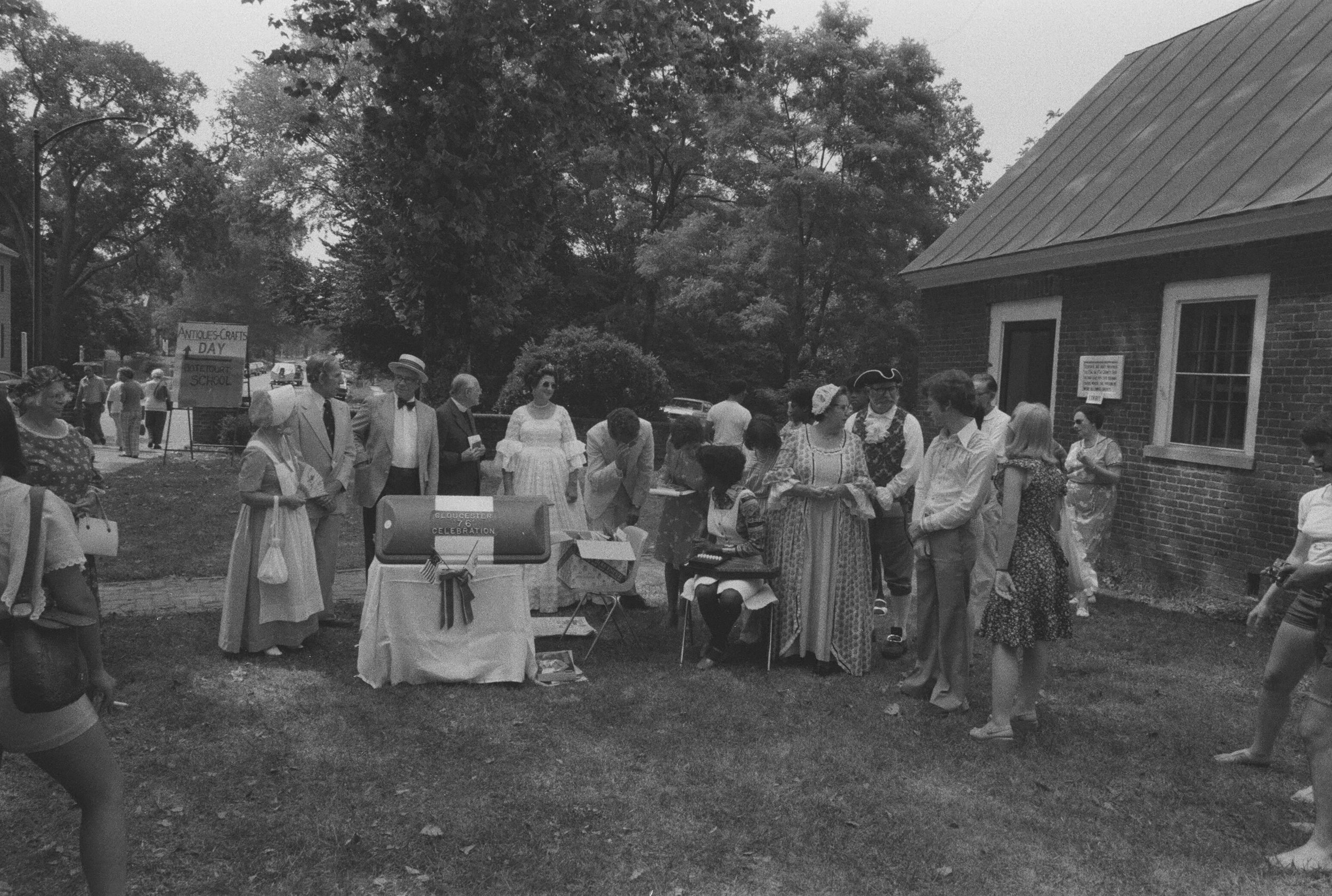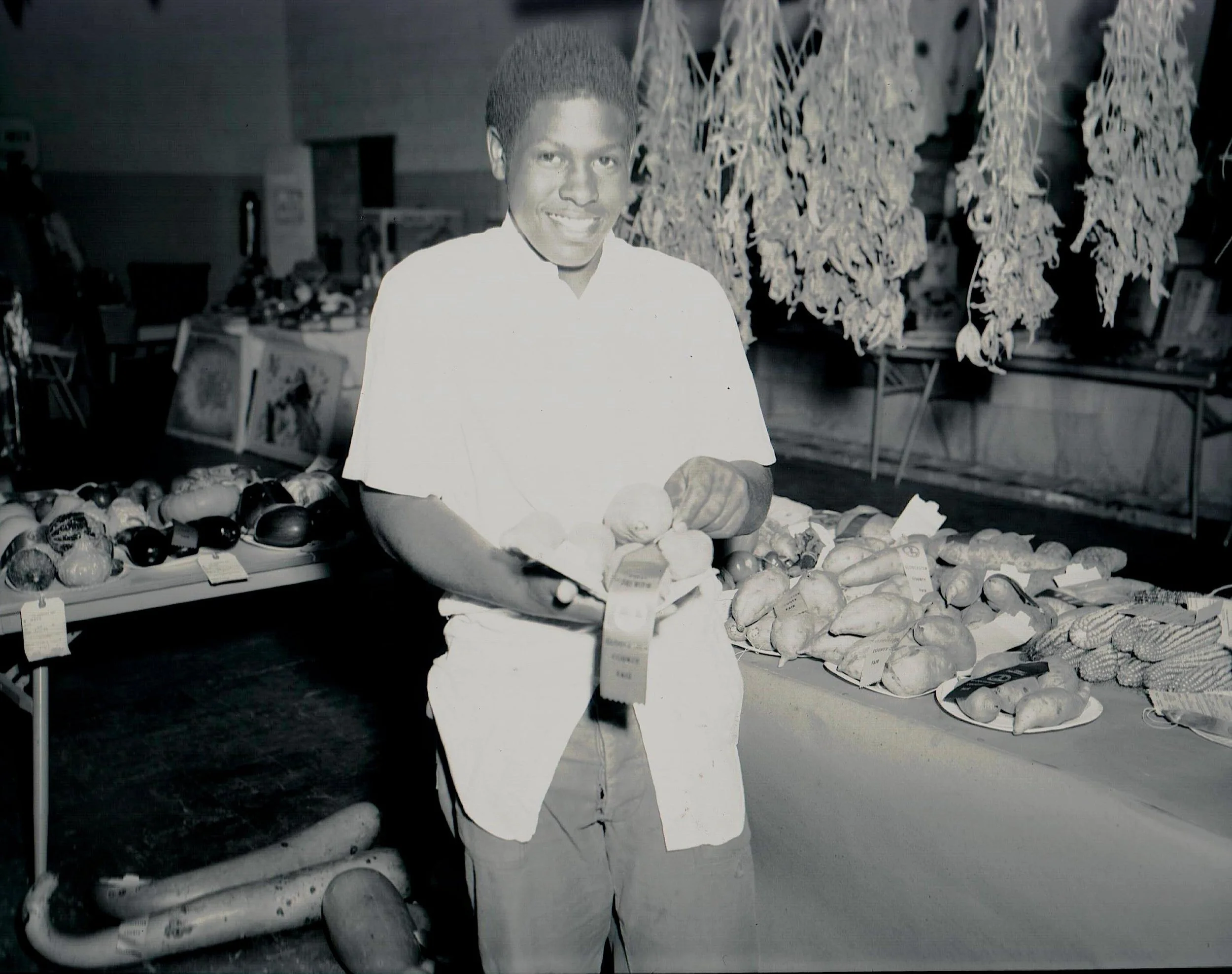Freedom B. Goode
(1920 - 1985)
born in York, SC
Raised in Dallas, NC
1943, Graduated from Hampton Institute
Visionary leader and photographer, Freedom B. Goode captured the essence of Black life in Gloucester, VA throughout the civil rights era. Alongside leaders like T. C. Walker and Irene Morgan, Goode was a driving force for school integration and community change. His leadership was a steadying force in a County where the “Massive Resistance” to integration was persistent, long after other places in Virginia and the American South began to undergo real and lasting change. Goode’s quietly powerful images documented a time of great change in Virginia and the power of community, collaboration, and perseverance.
This Special Exhibition is Sponsored by the Cook Foundation.

Freedom B. Goode checking corn for signs of trouble.

Freedom encounters the press at Bicentennial celebrations in Gloucester. 1976.

Gloucester 325th anniversary time capsule ceremony in front of the Debtor’s Gaol at Gloucester Courthouse. Community members filled the casket, donated by funeral director David Bristow, with letters to their grandchildren and descendants telling about themselves and their predictions for the county’s future. The capsule was buried on the court green to be opened in 2076. August 7, 1976.
Education and Integration
Following the 1954 Brown v. Board of Education decision, which declared that segregated schools were unconstitutional, Gloucester County, like many Southern communities, initially resisted integration. Virginia instituted "Massive Resistance" policies, which aimed to delay and obstruct the integration of public schools. This resistance included tactics like closing public schools rather than allowing them to integrate, creating delays that meant that integration in Gloucester, as elsewhere in Virginia, was a slow and often contentious process.
In the late 1950s and early 1960s, pressure from federal courts and civil rights activists finally pushed Gloucester toward school desegregation. The leadership of TC Walker, Freedom B. Goode, educators, and activists during this period was vital. The community rallied to support their children, providing mentorship and guidance to help them navigate the difficult environment of newly integrated schools. Despite these challenges, school integration was a crucial step in dismantling the legal structures of segregation, although social and economic inequalities persisted long after.

Ronald Davis displays a ribbon alongside yams at a 4-H fair.

4-H egg-grading lesson. From left to right: Barry Fletcher, Benton Gardner, Doris Wilson, Jonathan Stubbs. Circa 1971.

Egg grading class with Larry Reid.

4-H Awards: Harold Jackson presents an award to Sharon Washington at T.C. Walker School.

An agriculture class learning about the parts of an engine. Left to right: unknown, Randy Howard, Mark Lemon, Garland Driver, Mr. Lipscomb

Parade passing through the Gloucester Courthouse circle with Gloucester High School's first Black cheerleader, senior class president, and homecoming queen Rosette Tabb. 1971.
Faith and Fellowship
The enduring role of Black churches and faith as pillars of support, reflection, and celebration during pivotal times of transformation served not only as spiritual sanctuaries but also as centers of strength, resilience, and activism.
In a time marked by the struggle for civil rights and social justice, Freedom B. Goode captured weddings, recitals, baptisms, and Sunday services bringing the community together, reinforcing bonds, and fortifying our shared identity rooted in faith. Goode’s images immortalize the joy, hope, and solidarity of Gloucester’s Black families, reflecting the unwavering spirit that carried them through times of progress and resistance. This "Faith and Fellowship" section of Everyday People reveals the vital role of the Black church as a pillar of support, a beacon of hope, and a testament to the power of unity in the face of adversity.
Lewis wedding party on the steps of Zion Poplars Church outside Gloucester Courthouse. Back row L-R: Charlie Foster, Grace Gregory, Bill Lewis, Beechie Lee, Clarence Lee, Libby Driver, John Lee, Bernese Lee, unknown, unknown friend of the groom, Bertha Lee, Warren Lee, Charlie Lee.

John S. Jackson, Jr., Rose Spencer, and the bride’s father Philip before Reverend Sloane at Zion Hill Baptist Church. March 28, 1970.

Newlyweds leaving the church.

Stanley and Carrie Spencer.

Mezzie and Edith Reid cutting cake.


